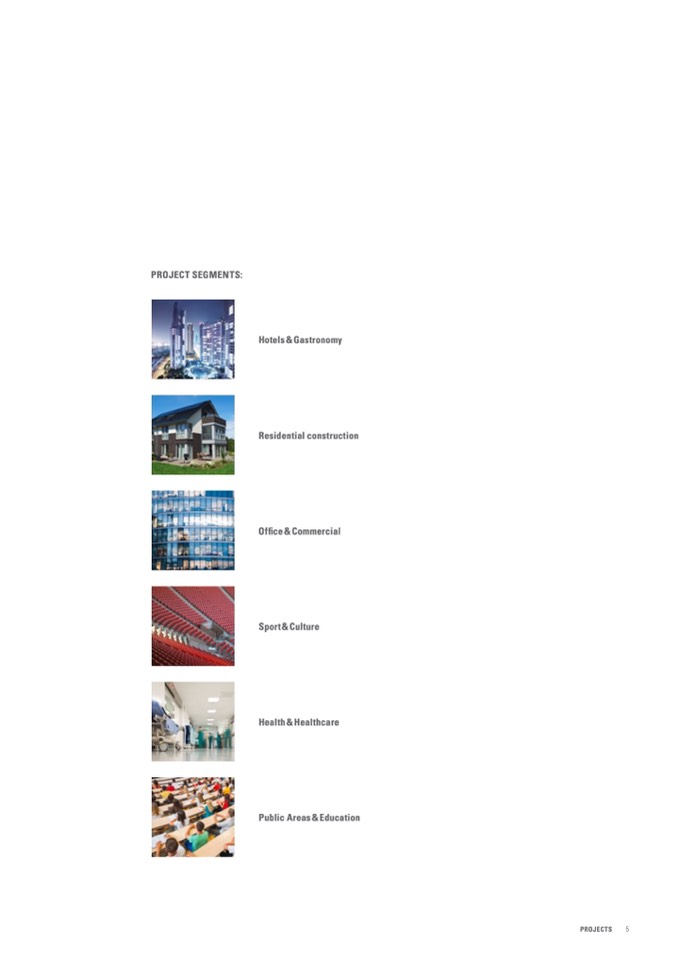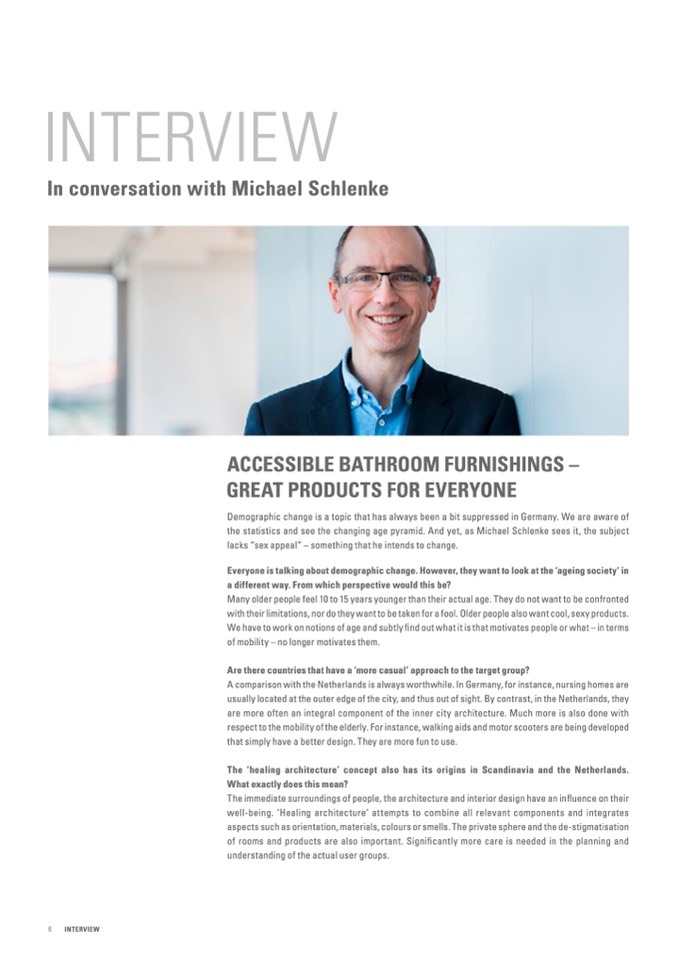


Demographic change is a topic that has always been a bit suppressed in Germany. We are aware of
the statistics and see the changing age pyramid. And yet, as Michael Schlenke sees it, the subject
lacks “sex appeal” – something that he intends to change.
Everyone is talking about demographic change. However, they want to look at the ‘ageing society’ in
a different way. From which perspective would this be?
Many older people feel 10 to 15 years younger than their actual age. They do not want to be confronted
with their limitations, nor do they want to be taken for a fool. Older people also want cool, sexy products.
We have to work on notions of age and subtly find out what it is that motivates people or what – in terms
of mobility – no longer motivates them.
Are there countries that have a ‘more casual’ approach to the target group?
A comparison with the Netherlands is always worthwhile. In Germany, for instance, nursing homes are
usually located at the outer edge of the city, and thus out of sight. By contrast, in the Netherlands, they
are more often an integral component of the inner city architecture. Much more is also done with
respect to the mobility of the elderly. For instance, walking aids and motor scooters are being developed
that simply have a better design. They are more fun to use.
The ‘healing architecture’ concept also has its origins in Scandinavia and the Netherlands.
What exactly does this mean?
The immediate surroundings of people, the architecture and interior design have an influence on their
well-being. ‘Healing architecture’ attempts to combine all relevant components and integrates
aspects such as orientation, materials, colours or smells. The private sphere and the de-stigmatisation
of rooms and products are also important. Significantly more care is needed in the planning and
understanding of the actual user groups.
6
INTERVIEW



